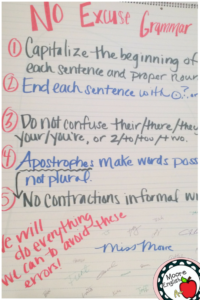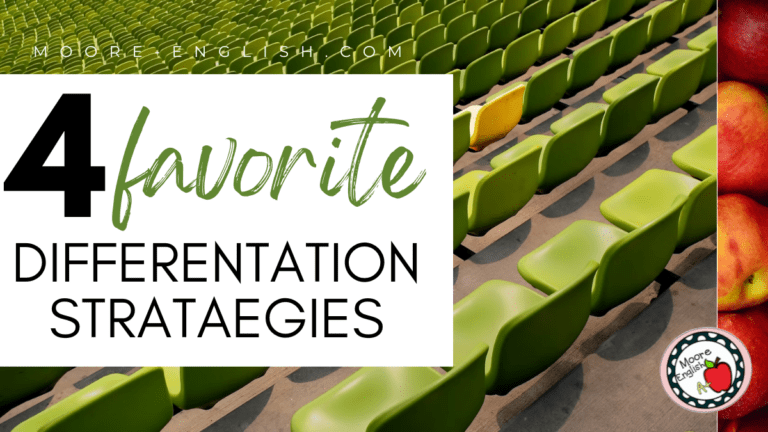After writing Sunday’s post about designing anchor charts in secondary, I began to think about which anchor charts are most important for secondary ELA. I narrowed my list down to my top four.
No-Excuse Grammar. I am not the only person to do No-Excuse Grammar, and that’s because this anchor chart works. This is one of the first charts we make at the beginning of the year, and we reference it all year long. As my students’ English skills develop, we add more to the chart. While the chart varies from class to class, the basics remain. At the bottom of this chart, you can also see how we sign our anchor charts to demonstrate our commitment to upholding these rules.
RIP Words. After the first or second writing from my students, we have a discussion about dead words. Drawing this anchor chart and filling it with dead words helps students conceptualize language. This is another chart we reference all year long.

Rhetorical triangle. Right before my sophomores read Julius Caesar, we review Aristotle’s rhetorical triangle. This is an example of an anchor chart that’s useful for a time. After Act III, my students take a rhetoric test, and that’s when the chart comes down. However, for the week or so that it’s up, my students reference this chart all the time. The triangle image really helps students visualize rhetoric.
Play Casts. When reading plays with my students, I always “cast” the play. Oftentimes plays have lots of characters, and my students struggle to conceptualize the relationships between these characters. For this reason, any time we read a play in class, we begin by drawing a family tree. Once we “cast” the play, I write the name of the student playing the role under the character’s name. This helps students visualize characters by connecting a classmate to each character. I leave this anchor chart up for the duration of the play and all the way through the test: in a testing situation, I’m not interested in whether my students remember the names of the characters but whether my students can analyze the relationships between characters, including their motivations and growth.








